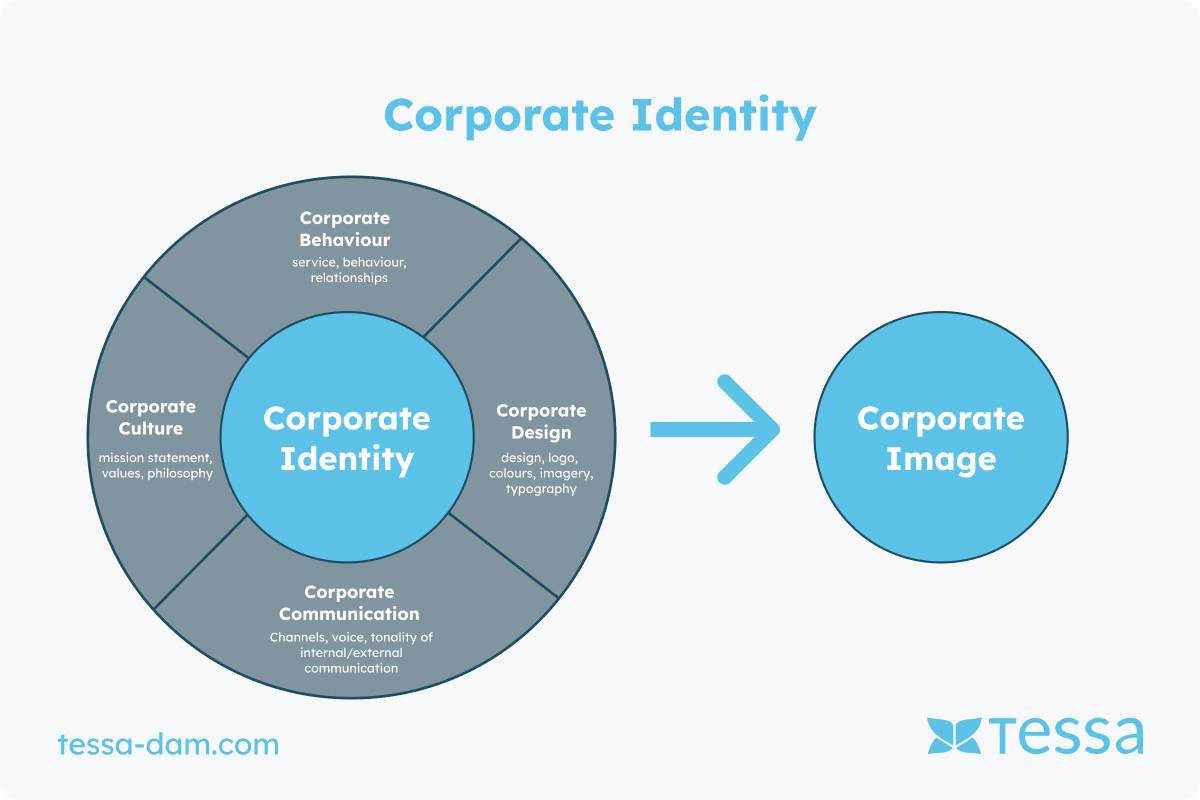Introduction to Corporate Identity (CI)
Corporate Identity (CI) is a concept that deals with the identity of a company and encompasses all strategies and measures aimed at creating and maintaining a unified and consistent corporate image. CI forms the foundation for how a company is perceived by its various stakeholders, including customers, employees, investors, and the public. CI goes far beyond the external appearance and also includes the company’s philosophy, culture, and communication strategies.
Definition of Corporate Identity
Corporate Identity can be described as the totality of characteristics that make a company unique and distinguish it from other companies. These characteristics include both visible and invisible elements. Visible elements include the logo, color scheme, typography, and the design of business papers, while invisible elements encompass the company’s values, culture, and vision. CI is thus a strategic tool designed to create a coherent and consistent corporate image that is conveyed across all communication channels and interactions.
Elements of Corporate Identity
Corporate Identity consists of several core elements that together shape the corporate image:
Corporate Design (CD): This is the visual part of CI and includes all design elements that represent a company externally. This includes the company logo, color palette, typography, layout of business papers, marketing materials, and the design of the company website. Corporate Design is crucial for visual recognition and differentiation of a company and significantly contributes to brand building.
Corporate Communication (CC): This encompasses all of a company’s communication measures, both internal and external. The goal of Corporate Communication is to convey a consistent and positive image of the company. This includes press releases, social media activities, internal communications such as employee magazines and intranet, as well as communication with business partners and customers.
Corporate Behavior (CB): This describes the behavior of the company and its employees towards internal and external stakeholders. This includes corporate culture, leadership culture, dealings with customers and suppliers, and behavior in crisis situations. Consistent Corporate Behavior is essential to build trust and credibility.
Corporate Culture: This is the totality of shared values, norms, and beliefs within a company. Corporate culture influences employee behavior and shapes the way decisions are made. A strong corporate culture can increase employee retention and motivation, thereby contributing to business success.
Corporate Design as a Component of CI
Corporate Design (CD) is a central component of Corporate Identity and includes all visual elements used to represent and communicate the company’s identity. A well-thought-out and consistent Corporate Design helps create a unified appearance and ensure the company’s recognizability. Important components of Corporate Design are:
Logo: The logo is the visual symbol of the company and plays a central role in brand identity. It should be unique, easily recognizable, and representative of the company’s values.
Color Palette: Colors have a strong psychological impact and can evoke specific associations and emotions. A carefully selected color palette contributes to recognizability and can support the desired brand message.
Typography: The fonts a company uses also contribute to its visual identity. They should be readable and used consistently across all communication materials.
Layout and Design Guidelines: Uniform design guidelines for all visual materials, from business cards to brochures to the website, help create a cohesive appearance.
Conclusion
A concept that shapes a company’s identity and image
Corporate Identity is an essential concept that shapes a company’s identity and image. It encompasses various elements, including Corporate Design, communication, behavior, and culture. A strong and consistent Corporate Design is crucial for visual recognizability and the successful positioning of a company in the market. Through clear and unified CI, companies can strengthen their brand identity and gain the trust and loyalty of their stakeholders.





